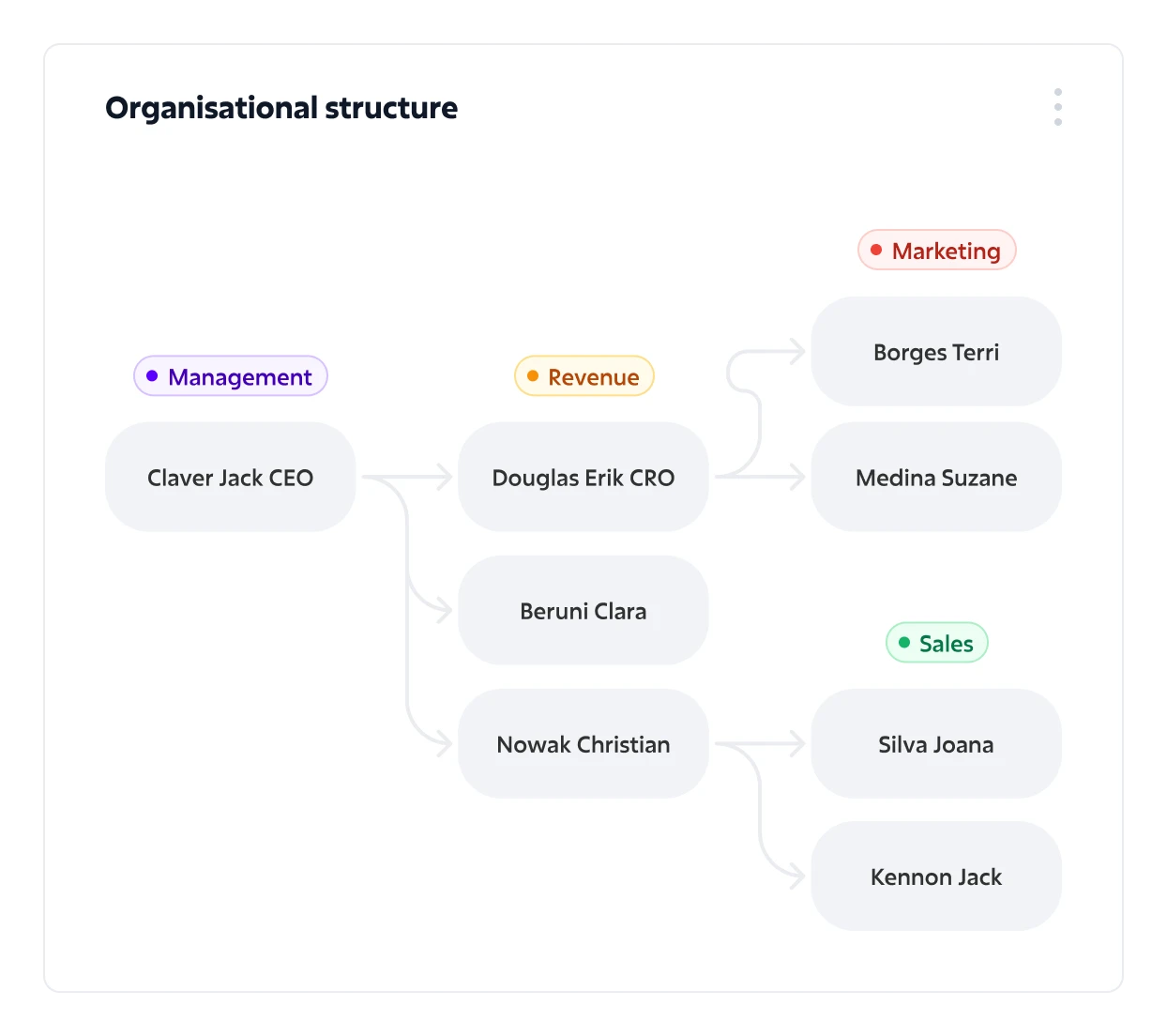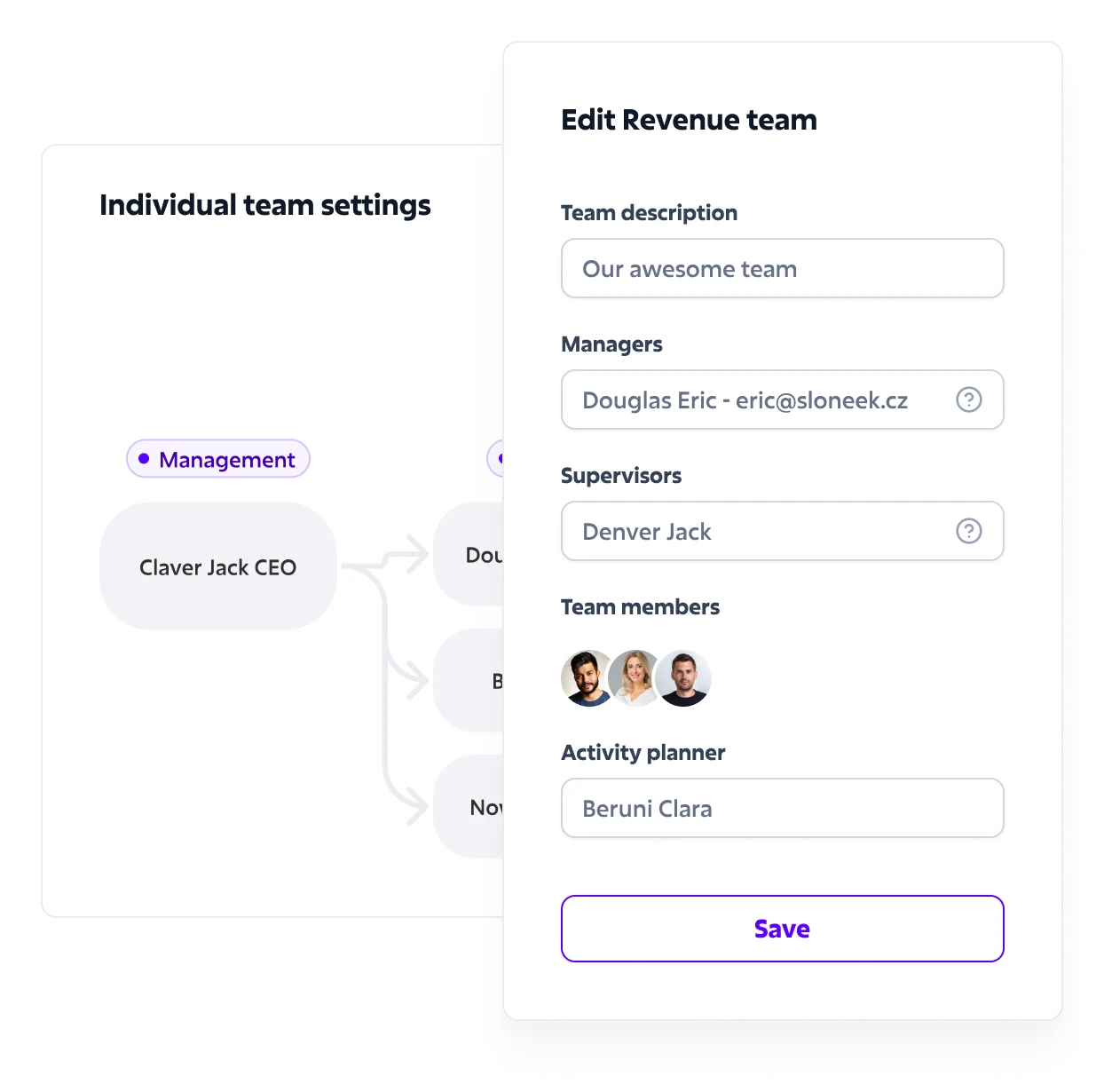Company and team 💯 organisational structure
Intuitive organisational structure for small, large, and hybrid companies with the possibility to define work roles.
- 14 days free
- No credit card required






Organisational structure
All users can be grouped into teams and can be arranged into an organizational chart.
-
Clear team structure
-
Setting managerial roles
-
Export org charter as image
-
Simple drag-and-drop changes

Individual team settings
-
Roles governing rights
-
Linkage with other modules
-
View of user details
We are here for you
Can we help you?
Our experts will answer questions, show you Sloneek , and help modernize your HR.
- Superior onboarding
- Introduction of all functionalities
- Presentation and offer tailored to your HR
- Answer any questions




Leave us your contact details, we will get back to you.
Company Organizational Structure: How to Find the Right One for Your Business
A company’s organizational structure is essentially a map that shows you who does what and where they’re going. Without one, a company could easily get lost. When you have clearly defined roles and responsibilities, everything runs smoothly. And not only that! A properly set structure simplifies communication, increases efficiency, and helps you achieve your goals.
Every company is unique, so there’s no “one-size-fits-all” model that fits all. What works for a large corporation may not be ideal for a small startup. It’s important to adapt the structure to the size of the company, its focus, and its corporate culture.
What is an organizational structure?
An organizational structure is the way in which roles, responsibilities, and relationships between individual employees are divided within a company. It enables smooth management and coordination of all activities so that the company can meet its goals. The structure should be based on the needs and specifics of the company, such as its size or field of operation. An organizational structure can be formal, with a clear hierarchy, or informal. It is based more on friendly interpersonal relationships and informal ties.
What types of organizational structures are there?
There are several types of organizational structures, which vary depending on the size of the company and its focus. For example, in a small company, the structure can be very simple, with a few employees who have a wide range of responsibilities. In larger organizations, the structure can be more complex and detailed, with multiple departments and specialized teams.
One of the most common types is the hierarchical organizational structure. It is based on a clear division into management positions, middle management, and employees who perform specific tasks. This model is ideal for larger companies, where it is necessary to have clearly defined roles and responsibilities. In such a system, everyone knows who is in charge of which area, and what their powers and duties are. However, there are several other types of organizational structures:
- Functional structure: Employees are divided according to their expertise, for example, marketing, finance, and production. This model is very common. It is excellent in terms of efficiency, but it can hinder communication between departments.
- Divisional structure: This model divides the company into separate units based on products, regions, or customer segments. It is suitable for larger companies, but it is more expensive.
- Matrix structure: Combines elements of functional and divisional structures. Employees have multiple supervisors and can work on several projects at the same time. It encourages collaboration, but can be confusing if not managed well.
- Project-oriented structure: This model is ideal for companies that focus on specific projects. Teams are made up of different departments and are managed by a project manager. The advantage is quick decision-making, but it can interfere with longer-term processes.
- Flat structure: Minimal hierarchy ensures quick communication and decision-making. The system is ideal for small companies or startups.
- Agile structure: Flexible teams focused on specific tasks.
- Hybrid models: A combination of different structures to achieve a balance between specialization and collaboration.
How to choose the right organizational structure for your company?
Choosing the right organizational structure for your company is not difficult, but there are several factors to consider. Start with the size of the company. The organizational structure of a small company is usually simpler because the number of employees is not very high. In such an environment, the company can operate on the basis of wider collaboration between individuals, where each employee often takes on multiple roles. While this can bring more flexibility, it is important to have at least a minimal structure that determines who has what responsibility and how decision-making processes will be handled. Larger companies, on the other hand, often need more complex models, such as a matrix structure.
Next, consider the strategic goals of the company. If you have multiple product lines, a divisional structure may be the right choice for you. For fast-paced and innovative projects, a project structure is ideal.
The company culture also plays a role. Traditional companies tend to choose hierarchical structures. In contrast, startups often prefer flexible models, such as a flat structure. Choose a structure that suits the size of your team and financial capabilities.
How can Sloneek HR help with organizational structure?
Whether you are a small business that is growing or a large corporation with many departments, the right organizational structure for your business is the key to success. It helps achieve efficiency, clarity and facilitates daily operations. When you understand what type of structure is best for your business, you will have a stable foundation for growth and prosperity.
Technologies such as Sloneek HR can help you set up and maintain this structure correctly, ensuring that your business grows confidently and smoothly. With Sloneek, you can easily set up roles, responsibilities and access rights for each employee. It will also help you optimize internal communication and streamline processes. Thanks to a clear view of the structure, you are always in control of how everything is set up and what changes need to be made.


